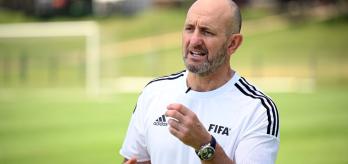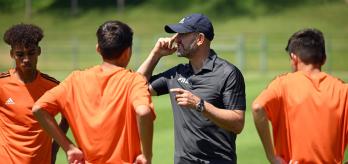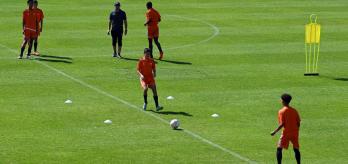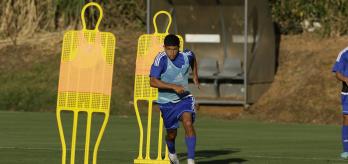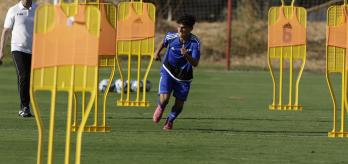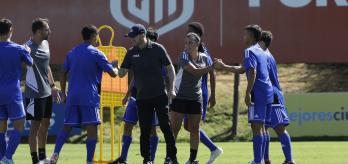For short-term injuries (less than two weeks), the drills tend to be carried out once as part of a fast-tracked return to play. In contrast, for longer injury lay-offs (more than three months), the technical drills are repeated over multiple sessions and then gradually performed less frequently until they eventually simply become part of a technical warm-up during the subsequent phases.
Training perspective
The drills are designed for a minimum of three participants, with one working player assisted by two ball-serving players performing a succession of exercises with the football for specified periods. This three-player approach is essential when preparing players to return from injury (see Training perspective – part 1 for an introduction to this series).
Emphasis and methodology
The drills target technical coordination in tight spaces with a focus on quick feet, fluid movement and passing quality. The working player is active within the grid, while the ball-serving players are relatively static and provide the anchor points for the working player to pass and receive the ball. The drills also emphasise technical balance and are designed to ensure consistency in several movement planes. Overall, this methodology applies a loaded-technical-exposure (LTE) approach to a variety of simple functional techniques and passing patterns with distances that are appropriate when recommencing ball work.
Overall objective
The technical drills are used to sharpen players’ coordinative pathways and technique following brief injury lay-offs and to reboot and recondition the same pathways following longer spells on the sidelines.
Implementation
Aimed at all on-the-field practitioners responsible for helping players return from injury, the drills in this session form part of an overall training programme aimed at providing a variety of technical-physical training solutions (with a stronger emphasis on the technical elements) for all phases of recuperation. Practitioners can select individual drills or entire sessions to fit their overall training plans for players in their care.
Workload training metrics
A simple table showing the duration of the drills, the number of sets and the work-to-rest ratios can be found here:
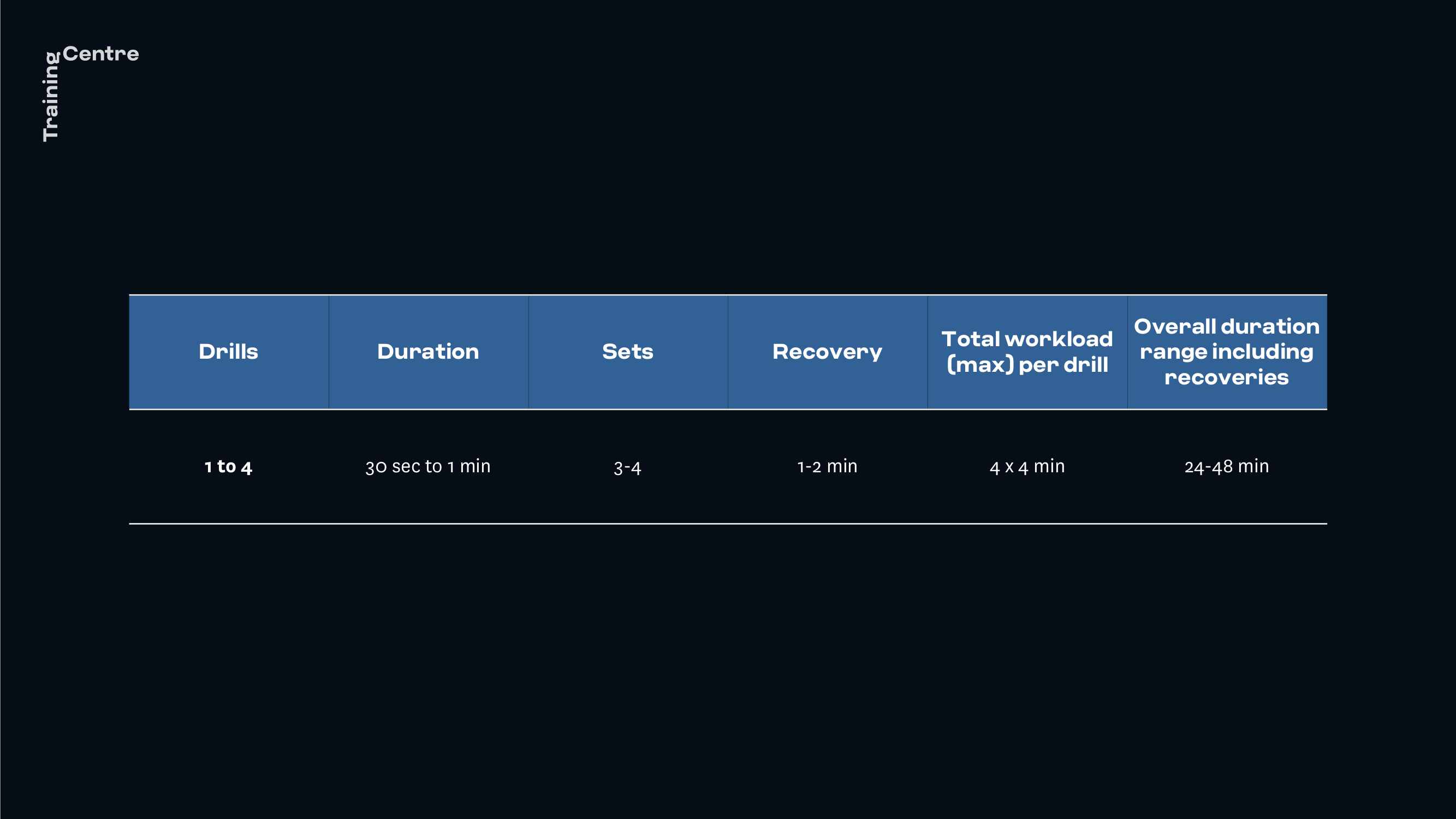
Set-up for all drills
Grid distances
-
Set up a 15x12m grid using flat discs or cones (a+b)
-
Position two poles or mannequins 4m apart at the midpoint of the grid (c)
-
Position a pole or mannequin at the midpoint and 2m in front of the mannequin gate (d)
-
Position a flat disc or cone at the midpoint and 2m behind the mannequin gate (d)
-
Three to four sets
-
30 seconds to 1 minute per set
-
Work-to-rest ratio of 1:2
-
Technically balanced drills
-
Minimum of 1 working player + 2 ball-serving players
-
Maximum of 4 players, rotating between working, ball-serving and resting players
-
Allow players a familiarisation period before starting the first set
-
Encourage players to use their left and right foot to pass and perform their technical movements
-
The duration of the drills is to be calculated while the ball in play; stop the watch if the rhythm of the drill is interrupted
Drill 1: Shift the ball, play the pass
-
Server 1 plays a straight pass wide of the mannequin
-
The working player shifts the ball across the mannequin and then plays an angled pass to server 2
-
Server 2 plays a return pass to the inside of the mannequin gate
-
The working player shifts the ball wide of the mannequin and plays a straight pass back to server 2
-
The sequence is then repeated in the opposite direction
-
To ensure technical balance when moving from left to right, the working player should shift the ball with their left foot and play the pass with their right foot. The opposite applies when moving from right to left.
Drill 2: One- and two-touch with lateral, forward and backward movement patterns
-
Server 1 plays a straight pass wide of the mannequin
-
The working player shifts the ball across the mannequin and plays a straight pass back to server 1, before moving forwards quickly to the central mannequin to receive a short return pass
-
The working player plays a short, angled pass to server 2 and then moves backwards quickly to the inside of the mannequin gate
-
Server 2 plays a pass to the inside of the mannequin gate
-
The working player shifts the ball across the mannequin and plays a straight pass back to server 2
-
The sequence is then repeated in opposite direction
-
To ensure technical balance, players should be encouraged to use their right foot when passing from the right-hand side of the mannequin gate and their left foot when passing from the left-hand side of the mannequin gate.
Drill 3: One-touch pass and move with lateral footwork
-
Server 1 plays a straight pass wide of the mannequin
-
The working player plays a return pass and then moves quickly to the midpoint of the mannequin gate
-
Server 1 plays an angled pass to the inside of the mannequin gate
-
The working player plays an angled pass to server 2 and then moves forwards quickly to the central mannequin to receive a short return pass
-
The working player plays a short, angled pass back to server 2 before moving backwards quickly and to the outside of the mannequin gate
-
The sequence is then repeated in the opposite direction
-
To ensure technical balance, players should be encouraged to use their right foot when passing from the right-hand side of the mannequin gate and their left foot when passing from the left-hand side of the mannequin gate.
Drill 4: Back into position, pass wide, drop to receive, turn and switch wide
-
The working player starts at the flat disc or cone inside the grid
-
Server 1 plays an angled pass wide of the mannequin
-
The working player runs through the mannequin gate to receive the ball and plays a return pass
-
The working player then drops back behind the central mannequin to receive a second pass from server 1
-
The working player shifts the ball across the middle mannequin and plays a diagonal pass to server 2
-
The working player then accelerates to their starting position
-
The sequence is then repeated in the opposite direction
-
To ensure technical balance, players should be encouraged to use their right foot when passing from the right-hand side of the mannequin gate and their left foot when passing from the left-hand side of the mannequin gate.









